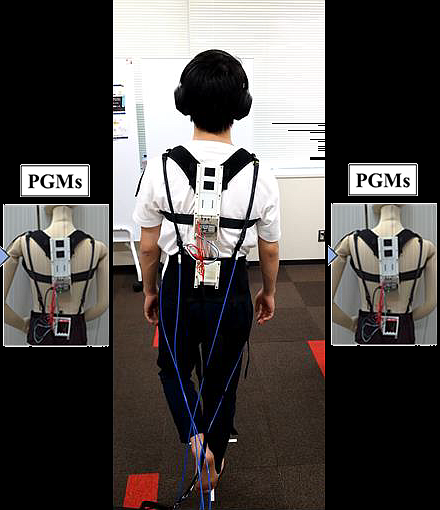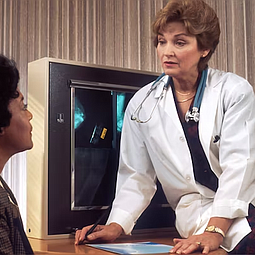Wearable Devices Changing Healthcare for Older Adults
December 2, 2023 at 5:21 p.m.
Technology is continuing to transform our lives. Whether its smartphones or smart cars and houses, tech has crept its way into nearly every facet of life, including healthcare. It is not just the use of artificial intelligence (AI) and robotic surgery. Wearable technology is now transforming how diseases are diagnosed and treated. From the runner checking their heart rate at the end of a 5k to an older adult administering an EKG after a series of heart palpitations, wearable tech is making a big difference.
The rise of wearable tech in healthcare is changing the way we’re able to monitor our own health. There are shirts that can monitor your heartbeat. There are sensors that can alert a diabetic when their blood sugar is getting low, and smart contact lenses that can give the vision-impaired the opportunity to see. These technologies have the potential to significantly improve quality of life for many older adults.
Scientists have now develop an innovative device to help older adults train their posture control, minimizing the risk of falls and associated injuries. Maintaining balance and posture is quite a complex skill, even though it comes naturally to most people. Postural control tends to worsen with age due to various reasons, such as muscle weakness coupled with changes in vision and sensory input. This explains why older adults are much more prone to falling and suffering fall-related injuries than younger individuals.
Over the past few decades, scientists have found that postural control can be improved through various exercises, which in turn helps prevent falls. It is possible to train and cultivate the ability to perform compensatory postural adjustments (CPAs) to counteract the effects of unexpected external perturbations. Although scientists have come up with specialized devices to perform balance exercises involving unexpected perturbations, these machines are generally bulky, expensive, and complex to use.
In a recent study published in IEEE Journal of Translational Engineering in Health and Medicine, Japanese researchers explored how a wearable device can prevent falls in older adults. The team developed a wearable balance exercise device (WBED) and investigated its effects on CPAs and reactive postural control.
This wearable device uses two pneumatic artificial muscles (PAMs) to generate unexpected perturbations. These PAMs, which resemble a pair of hollow shoulder straps or suspenders, can be forced to extend or contract by regulating the air pressure inside them. For this purpose, the WBED includes a set of electronically controlled valves connected to a can of compressed gas. This enables a computer program or smartphone application to control the valves and quickly fill or empty either PAM with gas, producing a force that pulls the user sideways in a specific direction. In the near future, the proposed device could revolutionize how people with a high tendency to fall perform balance training.
Wearables Providing a Host of Health Benefits
Wearable tech in healthcare is offering solutions to diverse ailments, including vision loss, hearing loss, and physical disabilities. Continuous glucose monitoring (CGM) sensors provide 24/7 monitoring to help individuals with type 1 diabetes track their blood sugar and adjust accordingly. These sensors can also help those with intensive insulin therapy, hypoglycemia unawareness, or high or low blood sugar.
CGM sensors sit under the skin, usually on your arm or stomach. Their wireless transmitters send information to an external monitor, and the data are used to make medication adjustments. Electrocardiogram (ECG) technology is a medical-grade process that measures heart activity and reveals any potential abnormalities. Wearable ECGs may become a vital tool when checking for signs of atrial fibrillation (Afib). Products with ECG sensors can reveal health conditions that often go unnoticed. ECG monitoring also has practical applications for fitness and sports training.
Electronic skin patches adhere directly to the skin and are part of the wearable health technology industry. Sensors in the patches contain wireless transmitters that allow clinicians continuous remote access to data. Electronic skin patches are used for monitoring vital signs, delivering medications, wound care, and motion detection. Healthcare professionals are now using hydration sensors to monitor patients prone to dehydration or those with adrenal gland disorders.
Wearable Smart Eyewear and Smart Clothing
Virtual reality, augmented reality, eye trackers, and smart glasses are changing how older adults with vision loss and/or impairment are being treated. Devices are being developed that provide magnification, color contrast, or voice-activated commands, these devices can provide life-changing benefits.
Smart contact lenses have several applications for older adults with vision loss or impairment. Augmented reality devices can magnify images and project them to a smartphone for clearer viewing. Other features help with light sensitivity and deliver medicine. In addition to improving sight, eye specialists are using smart contact lenses to monitor eye health and identify eye diseases earlier.
Smart clothing is being developed for undergarments, clothing, and footwear embedded with sensors. These sensors track a range of biometric data, including vital signs, cardiac monitoring, stress levels, and even signs useful in preventive healthcare. Michael Snyder of Stanford University in Palo Alto, California, is a pioneer in the field of wearables. He said the greatest benefits are that wearable technology empowers individuals in a whole new way, providing insight into your body in real time. Continuous monitoring provides a baseline and your baseline is unique to you. It reveals problems and can alert an adverse event.
Snyder and his team have pioneered an app that pairs with a smartwatch to detect infection and disease. They have found that this method of disease detection could identify COVID cases 80% of time before symptoms even occurred. Electronic watches and rings, and more smart jewelry, such as earrings, will be coming. It is predicted that as soft electronics advance, wrist-worn devices may become thinner and almost transparent.
Clothes can be useful for applying electronics and sensors across larger areas of the body. Many companies are focusing on athletic apparel, such as smart garments that detect muscle activity during a workout. Already available are upper garments that can measure heart rate and socks that can measure gait and foot strike.
This is now the first inning for wearables and it is expected that as the field advances, these garments will even be machine washable. The possibilities may include shirts, shorts, underwear, bras, headbands, skull caps, and arm sleeves.
John Schieszer is an award-winning national journalist and radio and podcast broadcaster of The Medical Minute. He can be reached at medicalminutes@gmail.com.





